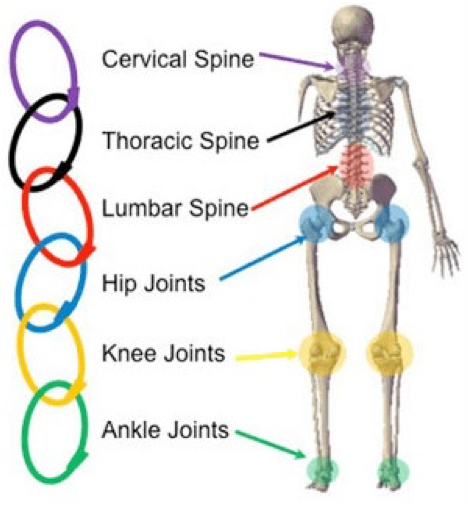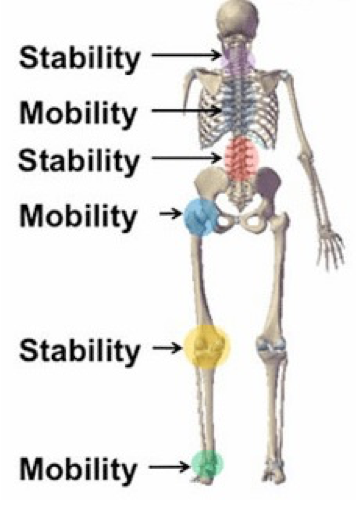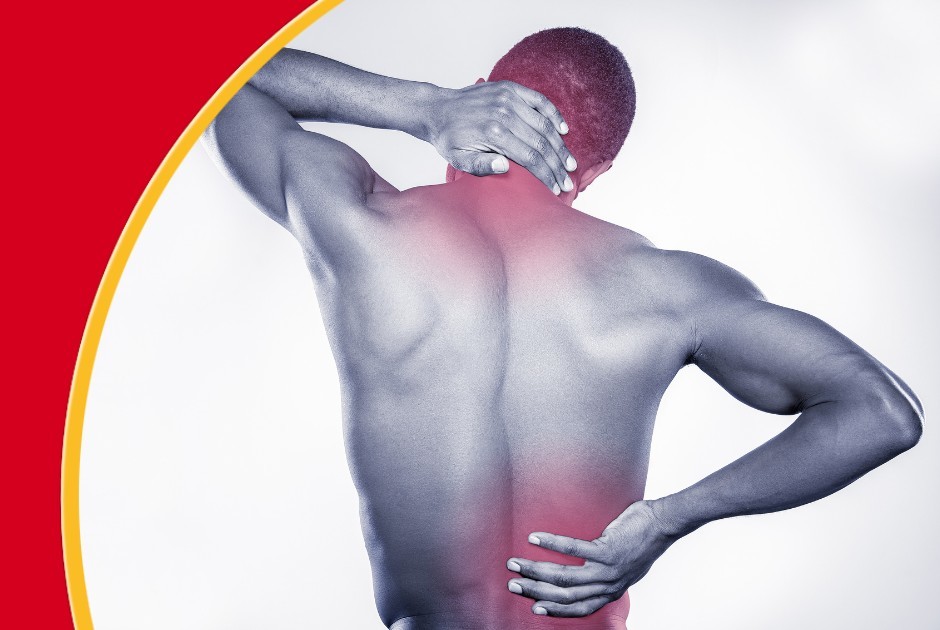The Joint-by-joint Concept: Why Your Ankle Can Affect Your Hip, And Your Hip Can Affect Your Knee
Posted on 21st June 2023 at 13:26
The chain is significant. No, we’re not talking about the 70s track “The Chain” by Fleetwood Mac, although if you’re over a certain age there’s a chance you’re humming the bass line now. We’re talking about the kinetic chain.
The kinetic chain is fascinating and shows how incredible the human body is.
Open any anatomy textbook, and you’ll see how starting at the bottom, i.e. the foot, everything is structurally linked upwards. This is not by chance. The kinetic chain means that essentially, if we were to begin from the foot and work our way upwards, each joint provides a link in that chain in our ability to move.
Although there are far more joints in your human body, for example the human hand has approximately (taking into consideration that not everyone’s identical) 27 joints in it alone, the joints that comprise the kinetic chain are largely the ones needed for movement of the body, as seen in the diagram here.

How do our muscles move?
The description “the human body is a series of pulleys” best describes what happens when we move: the muscles, which are attached to bone, contract (pull) allowing the articulation (movement) between the bones comprising of a joint. So, for example, when we step forward, the hip flexors and quadriceps pull the femur (thigh) forwards, while the quadriceps also pulls the tibula and fibula (lower leg) forward too.
Technically speaking there’s a little more going on than that, agonists and antagonists, proprioception, core stability… the list goes on. But let’s keep it simple for now otherwise we could be here all day!
So back to that leg moving forwards. When we move our legs, or any of these joints that comprise the kinetic chain, they each have a role. And this role can is either to provide stability or mobility in the kinetic chain.

The above diagram shows that the same parts of the chain highlighted above have one of these two roles. And this is essential to healthy, natural human movement, because that’s what we’re designed to do.
So, what happens when these links in the chain DON’T provide the stability or mobility they’re supposed to?
Well, it’s not ideal: when structures in the human body don’t do what they’re meant to, whether that’s to provide stability or mobility, other structures compensate. This all boils down to the fact that we are meant to move in order to survive. If our ancient ancestors couldn’t find food, shelter, water or escape from danger, there’s a good chance we wouldn’t be here today.
These threats are less of an issue in the western world nowadays. So why do we then still develop compensatory patterns? The simple answer is ignorance. We ignore our bodies - i.e. pain, particularly in today’s busy world where looking after our bodies is often an after thought.
There’s a reason sitting for prolonged periods of time is uncomfortable: we’re not meant to do it. And when we ignore those urges to get up, move, and stretch, we allow the body to develop compensatory patterns. By slouching, our lower backs, which should be providing stability are now moving forward. If enough time passes, will have a new resting position. This has a knock-on effect to links above and below the lower back. This is known as the joint-by-joint concept. Whenever something isn’t functioning, one way to investigate is to look at the joints above and below the area.
In simple terms, links in the chain that need to move should move, and vice versa for links that should be stable. Hence why a stiff ankle or hip will affect the knee. These compensatory patterns are what leads to long term injury and/or higher rates of re-injury.
So, the next time you feel pain, slow down and don’t try and soldier on. Get booked in and assessed so you can get back to moving in all the ways you want to. We know it can be really hard to find time but neglecting your body can lead to more injuries or problems that are tricky to resolve further down the line.
If you’re struggling with an injury or would like to talk about preventing injuries, contact our friendly team today to see how we can help you.
Share this post:

